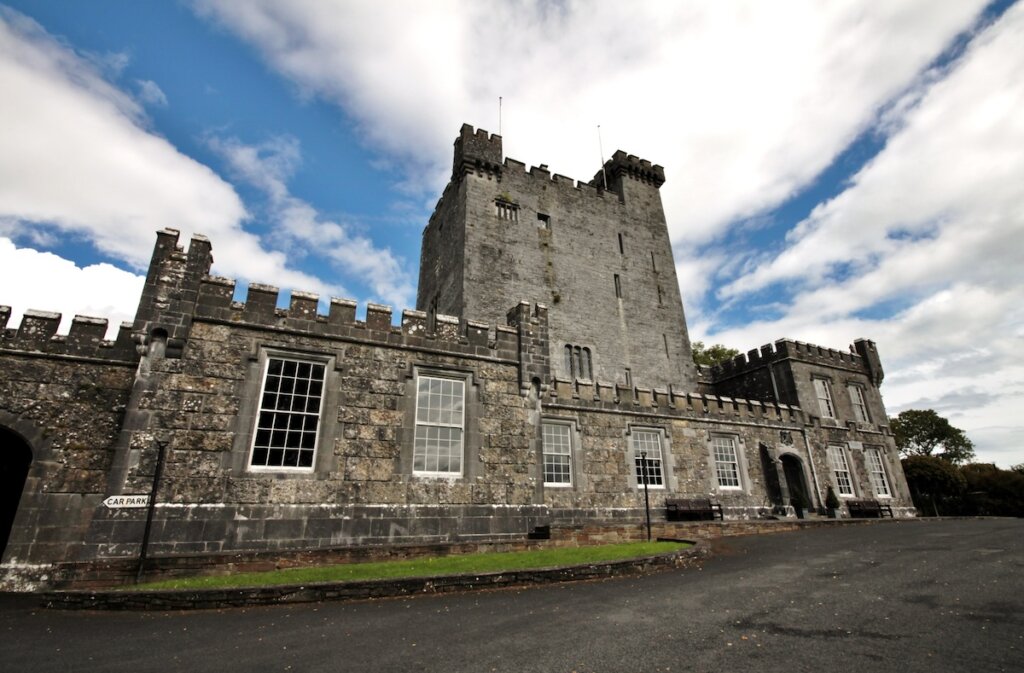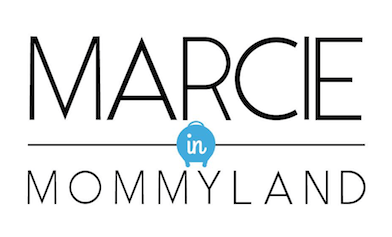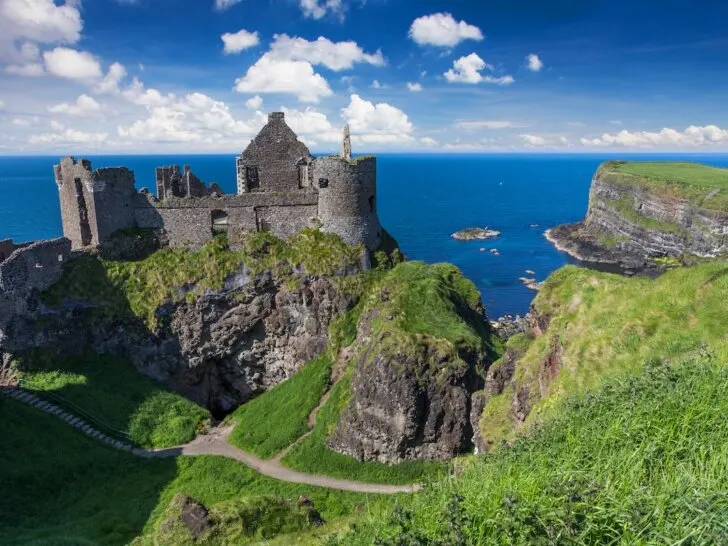Dreaming of your first Ireland trip? Let me show you exactly how to plan a trip to Ireland like a pro!
This post about how to plan a trip to Ireland for the first time was written by family travel expert Marcie Cheung and contains affiliate links which means if you purchase something from one of my affiliate links, I may earn a small commission that goes back into maintaining this blog.
Have you dreamed of visiting the Emerald Isle since watching Leap Year and want to know how to plan a trip to Ireland?
No one would question you! With six national parks, more than 7,000 pubs, and the 15th happiest country, Ireland is a great place for an epic road trip or short city break.
But if you’ve never visited before, planning a trip to Ireland can be a difficult task!
This easy-to-follow Ireland trip planner will take you through absolutely all the steps and questions to ask yourself so the planning process isn’t stressful.
You can tick everything off so you know for certain you haven’t forgotten anything. Once you’re on the plane, you’ll be able to relax knowing you’re about to have a fun, Irish adventure!
14-Step Guide on How To Plan a Trip to Ireland
Step 1: Check Your Passport and Visa Requirements for Ireland
Ireland is often used as a catch-all name for two countries on the same island: The Republic of Ireland and Northern Ireland. While the Republic of Ireland is part of the European Union (EU), Northern Ireland is part of the UK which is no longer in the EU. Neither country is part of the Schengen Area.

However, that all sounds way more confusing than the reality! There is an open border and free movement between the two countries.
As long as you have a valid passport for the duration of your stay, most North American tourists won’t need a visa to visit the Republic of Ireland or Northern Ireland (for up to 90 days).
Check your specific circumstances with the US Department of Statement website if you’re unsure. But otherwise, you’re good to go!
Step 2: Figure out the Length of Your Trip to Ireland
The next step of how to plan a trip to Ireland is to figure out the length of your trip.
With limited paid time off, school breaks, and other responsibilities and restrictions, you might have a good idea of how long you can spend in Ireland!

Planning a trip to Dublin? Allow at least four days to enjoy a city break in the Irish capital.
Planning a road trip around the country? Seven days is the shortest amount of time you need to explore the Republic of Ireland. 10 days is better if you also want to visit Northern Ireland, and two weeks is just enough time to see all the main highlights.
If you’re planning a trip to Ireland and Scotland, you’ll need two weeks minimum (ideally three or more!) to explore both countries.
Step 3: Research the Best Time to Travel to Ireland
When planning an Ireland trip, weather, and annual events are huge considerations. They impact the size of crowds and the expense.
Transport is also a factor. Ferries to the Aran and Skellig Islands shut down over winter.

St. Patrick’s Day is celebrated annually on March 17th and is a huge celebration all over the country. If you want to celebrate Ireland’s patron saint during your travels, great! Just be prepared for lots of people, to spend $$$, and to book months in advance.
Ireland has a mild climate with temperatures in winter averaging 45°F/7°C and in summer, 65°F/18°C. You can expect rain on any day, year round!
If you’re not restricted by school breaks, the best time to plan a trip to Ireland is the shoulder season months of April – June and September – October. You’ll avoid the busiest and most expensive seasons but all of the seasonal attractions will be open. But most families visit Ireland during summer.
Step 4: Choose Your Destinations and Plan Your Itinerary
The best way to plan a trip to Ireland is to divide the country into sections. You can then decide which destinations you want (and have time) to visit.
Here are all of the key destinations in each part of Ireland:
- Northern Ireland – Belfast, the Giant’s Causeway, Derry
- East – Galway, Connemara National Park, Aran Islands, Cliffs of Moher
- Southeast – Ring of Kerry, Killarney National Park, Skellig Islands
- South – Cork, Kinsale, Cobh, Blarney Castle
- East – Dublin, Wicklow Mountains National Park
If you’re planning an Ireland trip that is two weeks or more, you’ll have time to visit all of these places! If you have less, cross off the destinations you are less interested in visiting.
Step 5: Create a Budget for Your Trip to Ireland
No Ireland trip planner can give you a specific figure for how much your Ireland vacation will cost. Some of the variables include the time of year, the size of your family/group, the length of your trip, and your style of travel.

However, Trip.com estimates that the cost of a four-night, three-day trip to Ireland for two people will cost an average of $1,600 per person.
This includes flights, accommodation, travel insurance, souvenirs, food, attractions, and excursions.
Traveling to Ireland on a budget is doable if you swap expensive cities like Dublin and Galway for smaller towns or cities like Doolin and Belfast. Hiking in national parks like Killarney and seeing natural wonders like the Cliffs of Moher are free!
Step 6: Book Your Flights to Ireland
Travelers flying from North America are in luck. There are 24 airports with direct flights to Dublin Airport from San Francisco to New York City. I was able to fly direct from Seattle!
Boston, Chicago, and two New York City airports also offer direct flights to Shannon Airport, a smaller airport on Ireland’s west coast.

Dublin might only have two terminals, but it’s still a major travel hub. Especially for flights from North America to Europe! You should have no problems finding affordable flights to Dublin year-round if you book a few months in advance.
Step 7: Book Accommodation in Ireland
The next step is to book your accommodation. The good news is that, unlike other European countries such as Italy and Spain, there is no tourist tax in the Republic of Ireland or Northern Ireland.
Hotels are ideal in larger cities like Dublin, Galway, and Belfast.

Guesthouses/bed and breakfasts when traveling through the countryside (in towns like Doolin and Killarney, for example) are a quintessential Irish experience. The owners are usually a lovely older couple and will serve a humongous Irish breakfast in the morning if you’re lucky!
Check out Airbnb for fun glamping options. There are treehouses, beach view pods, and even hobbit houses.
Step 8: Book a Rental Car
You won’t need a rental car if you’re staying in Dublin. It’s mostly a walkable city and using public transport (buses and trams) is much easier and cheaper than renting a car.
But if you’re venturing into the countryside then you’ll need a car! The smaller the better to squeeze down Ireland’s narrow country lanes.
You’ll need an international driving license to rent a car in Ireland. If you’re from North America and are used to an automatic transmission, note that manual is much more common in Ireland.
It’s often worth paying extra for an automatic car if you’re not used to manual! Especially because you’ll also be driving on the left in Ireland.
Check your credit card benefits to see if it includes complimentary rental car insurance.
Step 9: Purchase Attraction and Ferry Tickets
Most attractions in the Irish countryside, such as Blarney Castle, don’t need to be booked in advance. Some attractions, like the Cliffs of Moher and the Giant’s Causeway, are 100% free!

But in Dublin, it’s much better to be organized. Kilmainham Gaol always sells out so make that a priority. Book tickets to the Guinness Storehouse to avoid waiting in line too.
Ferries to the Aran Islands and Skellig Islands always book up during the peak season.
Step 10: Get Travel Insurance for Your Trip to Ireland
Ideally, you should buy travel insurance as soon as you book your flights. This will ensure you have coverage for every dime you spend on your trip to Ireland.

However, something more important than money is your health! As long as you take out a policy before you fly, you’ll be covered in the event of a medical emergency,
Check your credit card benefits as they might offer travel insurance as a perk.
Step 11: Figure Out Phone, Credit Card, and Currency
The Republic of Ireland’s currency is the Euro and Northern Ireland uses the Great British Pound. Bring a small amount of cash in both currencies and a travel credit card.

If American Express is your preferred credit card, bring a Mastercard or Visa as a backup. AMEX cards are not widely accepted in either the Republic of Ireland or Northern Ireland.
Don’t have an international phone plan? Consider getting an eSIM before you fly so that you can use the internet in Ireland as soon as your plane lands. If you’re also visiting Northern Ireland, choose a plan that covers Ireland and the UK.
Step 12: Watch Movies and Read Books Set in Ireland
Ireland is well known for its literary history and plenty of movies have been filmed on the Emerald Isle too. Reading and watching is the best way to get excited about your trip!
Read Ulysses or Dubliners by James Joyce if you prefer classics. Check out Wild Atlantic Women by Gráinne Lyons if you’d prefer a modern memoir.
P.S. I Love You (2007) and Leap Year (2010) are both romantic films shot in Ireland. Star Wars: The Last Jedi (2017) and The Quiet Man (1952) are both great Hollywood movies filmed in Ireland from different eras.
Step 13: Pack the Right Outfits for Your Irish Vacation
Since Ireland has a mild climate, it’s unlikely you’ll need snow boots or a sunhat. However, your visit in November could easily coincide with a random snowstorm. Heatwaves in April are not unheard of either.
Pay close attention to the forecast and bring versatile clothing. Sweat-wicking t-shirts and tank tops, jeans, and comfortable boots are handy in most seasons.
No matter when you visit, pack a good raincoat!
Step 14: Go to Ireland!
Once you’ve finished all these steps of how to plan a trip to Ireland, you can head to the airport.
Don’t forget to keep checking the weather forecast (it constantly changes!) and listen to as much traditional Irish folk music as you possibly can.
Planning a Trip to Ireland FAQs
Is Ireland cheap or expensive?
Ireland is not a cheap country to visit, but it’s not very expensive.
Dublin, Galway, and other Irish cities have expensive accommodation and restaurants. However, staying in the Irish countryside is much more affordable.
How many days do I need to see Ireland?
You’ll need a minimum of four days to see Ireland if you just want to stay in Dublin. Allow at least seven days if you’re planning an Irish road trip.
Two weeks in Ireland is ideal if you want to visit all of the regions, including Northern Ireland.
What is the best way to see Ireland for the first time?
Renting a car is the best way to see Ireland for the first time. Public transport is ideal in cities, but a rental car will allow you access to national parks, the coast, and remote areas of the countryside.
How To Plan a Trip to Ireland Wrap-Up
Figuring out how to plan a trip to Ireland is much less daunting when you follow a step-by-step Ireland vacation planner.
From your passports to packing, this guide will ensure you know the entrance requirements to both Northern Ireland and the Republic of Ireland. And all the rental car considerations you didn’t know before!
Witnessing the Cliffs of Moher in a quality raincoat before sitting by the fire in a centuries-old cozy pub will make all your due diligence worth the effort.
Looking for more Ireland travel resources? Check out Ireland in Summer: Tips + Things to Do, 21 Most Spectacular Hidden Gems in Ireland, 12 Best Day Trips From Dublin by Train, and 10 Best Dublin Hotels for Families Worth Booking!



